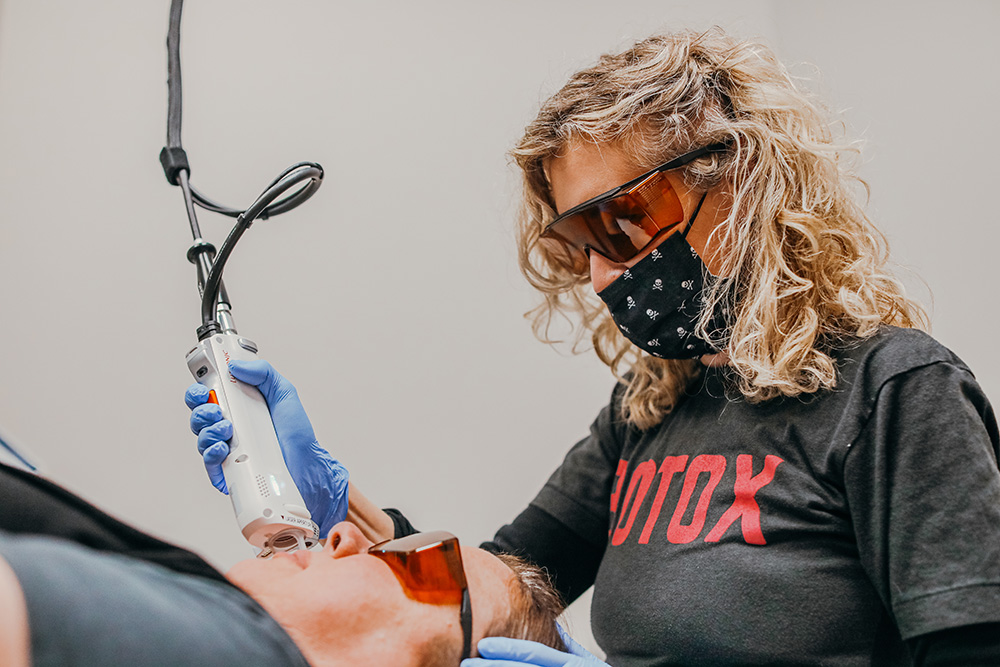With the end of Summer upon us, there is not a better time to focus on the importance of skin and getting regular skin cancer checks. Did you know that each year millions of people end up getting skin cancer?! That’s why it is so important to learn how to detect and to set up regular skin cancer screenings.
We are going to talk about 3 types of skin cancer.
- Basal Cell Carcinoma (BCC): This is the most common type of skin cancer. This type frequently occurs on those with fair skin. It looks like a pinkish patch of skin, or a flesh-colored pearl-like bump. They typically develop after many years of frequent sun exposure or indoor tanning. BCC can occur anywhere on the body, but are most commonly found on the head, neck and arms. Since BCC can spread to surrounding tissue, and grow into nerves and bones, it is essential for early diagnosis and treatment.
- Squamous Cell Carcinoma (SCC): This is the second most common form of skin cancer. It usually looks like a red firm bump, scaly patch, or a sore that repeatedly heals and then re-opens. SCC also occurs most often on people with fair skin. Typically forms after frequent sun exposure. Most common sites include: face, ear, neck, arms, chest and back. Left undetected, SCC can spread deep into the skin and spread to other areas of the body.
- Melanoma: This is by far the deadliest form of skin cancer. Early diagnosis and treatment are crucial. It typically develops in a mole or appears as a new dark spot on the skin. Learning the ABCDE signs of melanoma can be very helpful for early detection:
- ASYMMETRY: half of the mole is not the same as the other half.
- BORDER: the outer edge of the mole is poorly defined.
- COLOR: the color of the mole varies from one area to another.
- DIAMETER: the diameter of a mole that contains melanoma is usually greater than 6mm (size of a pencil eraser).
- EVOLVING: changing in size, shape or color.
Certain risk factors will increase your chance of developing melanoma. These risks include: frequent sun exposure, lite skin, family history, moles (more than 50), previous melanoma.
Prevention is key! The number one thing you can do to prevent skin cancer is to limit overall sun exposure. Here are some tips to help:
- Use Sunscreen: Chose a broad-spectrum, water-resistant sunscreen with a Sun Protection Factor (SPF) of 30 or more to all skin not covered by clothing. Reapply every 2 hours.
- Find Shade: Seek shade between the hours of 10 a.m. and 2 p.m. when possible. This is when the sun’s rays are at it’s strongest.
- Protect with Clothing: Wear long-sleeved shirts, pants, wide-brimmed hats, and sunglasses when possible.
- Avoid Tanning Beds:Ultraviolet light from tanning beds can also cause skin cancer and wrinkling. If you would still like a tan, try self-tanning products, but don’t forget to still use sunscreen with it.
The American Academy of Dermatology recommends periodic self-examinations of the whole body and to receive regular physician skin checks. Skin cancer is highly treatable when detected early. It is important to regularly examine your skin to see if any spots or moles on the skin are changing, itching, or bleeding. We at DermaBlue are currently taking new patients and offer professional full body skin cancer screenings by certified doctors and health professionals. Call us today to schedule an appointment! Don’t wait to get that spot checked out! Come see us now for personalized dermatological care.








